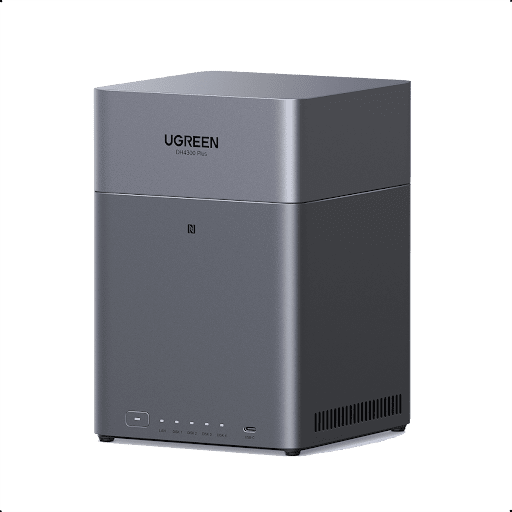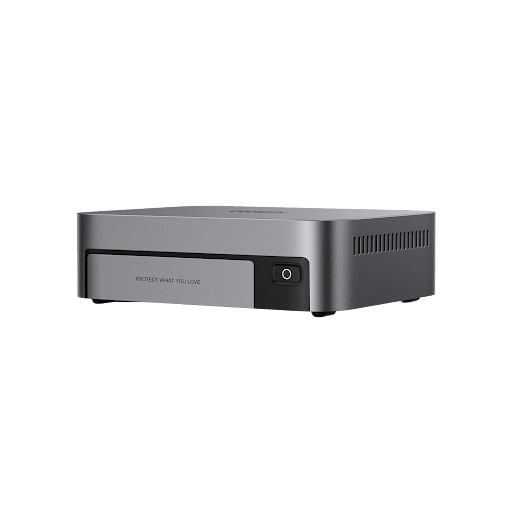
The persistent hum of traditional NAS devices has long been a source of frustration for home media enthusiasts. As our living spaces increasingly double as home offices and entertainment centers, that constant mechanical drone becomes more than just an annoyance – it’s a significant disruption to our daily lives. Meanwhile, the explosive growth of 4K content demands robust streaming solutions that can deliver pristine video quality without compromise.
Enter the silent SSD NAS solution: a revolutionary approach that combines whisper-quiet operation with lightning-fast performance. By leveraging solid-state storage technology, these systems eliminate the mechanical noise that plagues traditional hard drive-based units while delivering the sustained throughput necessary for flawless 4K streaming.
This comprehensive guide will walk you through everything you need to know about selecting and setting up the perfect silent SSD NAS for your home. We’ll explore critical selection criteria, provide detailed setup instructions, and share expert optimization tips to ensure you achieve the perfect balance of silent operation and exceptional streaming performance. Whether you’re a home theater enthusiast or simply seeking a quieter, more efficient network storage drive, you’ll discover exactly how to build your ideal system.
The Critical Need for Silent NAS in Modern Homes
The evolution of our living spaces into multi-functional environments has made noise management increasingly crucial. With remote work becoming permanent for many, the constant whir of traditional NAS systems can severely impact concentration and productivity. Standard HDD-based NAS units typically generate between 30-40 decibels of noise – equivalent to a whispered conversation – which becomes particularly noticeable during quiet moments or night-time operation.

In contrast, SSD-based NAS solutions operate virtually silently, producing only minimal noise from cooling systems when properly designed. The elimination of mechanical parts removes the characteristic spinning and seeking sounds that make traditional NAS units so intrusive. This transformation is further enhanced by modern chassis designs incorporating sound-dampening materials and intelligent airflow management that minimize fan noise without compromising cooling efficiency.
The impact of these acoustic improvements extends beyond mere comfort. Studies show that consistent background noise, even at relatively low levels, can increase stress and reduce cognitive performance. By choosing a silent SSD NAS solution, users create a more peaceful environment that supports both work and relaxation, making it an essential consideration for today’s integrated home environments.
Why SSD NAS Dominates for 4K Streaming Performance
Speed Advantages Over Traditional HDD Solutions
SSD NAS systems deliver exceptional streaming performance with sustained read speeds exceeding 500MB/s, easily handling multiple simultaneous 4K streams that typically require 25-100MB/s each. Unlike traditional HDDs that suffer from rotational latency, SSDs provide instantaneous data access with zero seek time, eliminating buffering delays during scene transitions or when multiple users access different media files simultaneously. This immediate response time ensures smooth playback even when jumping between different timestamps in your 4K content.
Reliability and Power Efficiency Factors
The absence of moving parts in SSDs dramatically reduces heat generation, typically operating 10-15 degrees Celsius cooler than HDDs. This lower thermal output allows for quieter cooling solutions and extends the overall system lifespan. SSDs also consume significantly less power, typically drawing 2-3 watts during operation compared to 6-8 watts for HDDs. This efficiency translates to improved reliability in always-on scenarios, with modern SSDs rated for up to 5 years of continuous operation. The reduced power consumption and heat generation create a positive feedback loop, further enhancing system stability and reducing the need for aggressive cooling, maintaining the silent operation that makes these systems ideal for home environments.
Essential Features for Uninterrupted 4K Streaming
Network connectivity forms the foundation of reliable 4K streaming, with 2.5GbE or faster interfaces being essential for handling multiple high-bitrate streams. Leading manufacturers like UGREEN have pioneered solutions that combine multiple network ports to achieve throughput exceeding 2Gbps, ensuring smooth playback even during peak household usage. Modern NAS units should offer at least two network ports to enable this capability while providing failover protection.
Hardware transcoding capabilities significantly impact streaming performance, particularly when serving multiple devices with varying playback requirements. A NAS equipped with Intel Quick Sync or similar GPU acceleration technology can handle real-time 4K transcoding without buffering, essential for streaming to mobile devices or older smart TVs. This dedicated hardware offloads processing from the main CPU, maintaining system responsiveness during intensive streaming sessions.
Memory and processor specifications directly influence the number of simultaneous streams your NAS can handle. A minimum of 8GB RAM ensures smooth operation of both the operating system and media server applications, while supporting features like thumbnail generation and metadata scanning. For processor selection, quad-core designs operating at 2GHz or higher provide the necessary headroom for both transcoding tasks and background operations, ensuring your streaming experience remains fluid regardless of concurrent system activities.
Embracing Silent, High-Performance Storage Solutions
The convergence of silent operation and superior 4K streaming capabilities makes SSD NAS solutions an invaluable addition to modern homes. By eliminating mechanical noise while delivering exceptional performance, these systems transform how we interact with and enjoy our media libraries. The combination of flash storage technology with optimized chassis design creates an unobtrusive yet powerful hub for all your streaming needs.
While the initial investment may exceed traditional HDD-based solutions, the long-term benefits of SSD NAS systems – including reduced power consumption, minimal maintenance requirements, and superior longevity – make them a sound investment for discerning users. Regular firmware updates and periodic health monitoring will ensure your system continues to perform optimally for years to come.
As streaming technology continues to evolve toward 8K resolution and beyond, the robust foundation provided by SSD NAS solutions ensures your home media infrastructure remains future-ready. The silent revolution in network storage has arrived, promising an enhanced viewing experience without compromising the tranquility of your living space.
